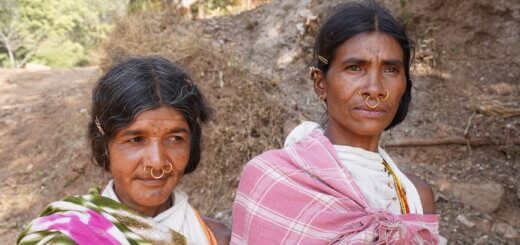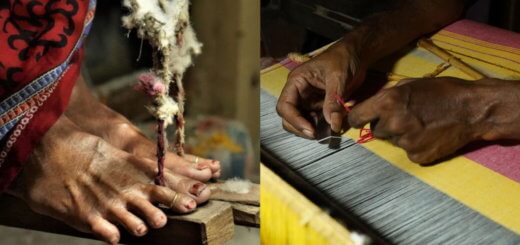Mangalajodi Ecotourism – A Sustainable Community Conservation and Tourism Initiative
The wooden boats flocked around in close proximity; wildlife photographers positioned their cameras with giant lens towards the same direction. There was an eerie silence only to be broken by the passing by dinghy. I tried hard to figure out what was going on when my guide smiled and said – “A Purple heron has caught a snake, photographers are all going crazy for the picture”. This is what I witnessed on a normal morning in Mangalajodi but few years back, it was quite different.
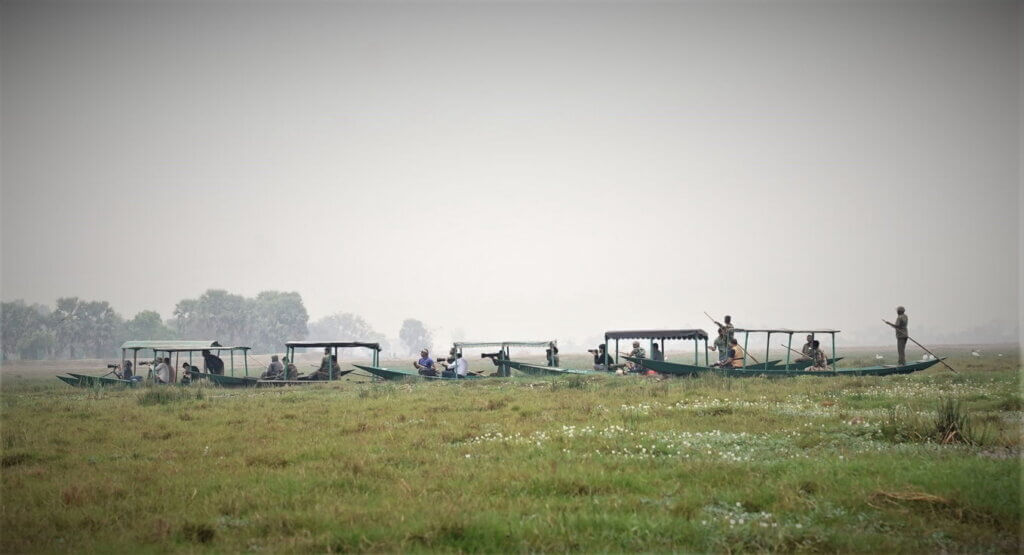
Let me tell you a story of nature, mankind, and conservation!
The success story of Mangalajodi in creating a safe space for the migratory and native birds preceded chaotic events, stark opposition, and crumbs of small scale violence. Converting the hardcore bird hunters and poacher into honest, dedicated conservationist was painfully onerous. One step, a small effort, taken in the right direction magnified the battle against hunting leading to a victorious present-day outcome.
Pin to read later
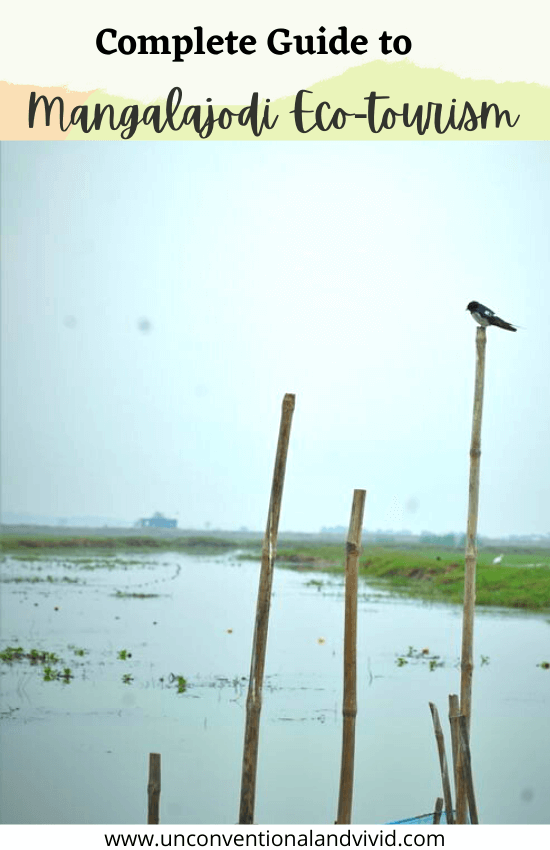
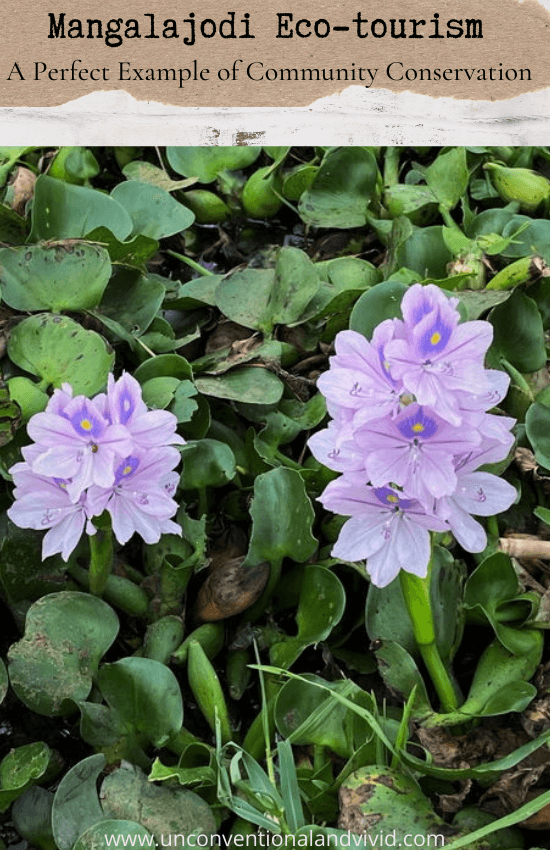
Table of Contents
Mangalajodi Wetlands – Winter Fiesta for the Migratory Birds
The marshlands of Mangalajodi is pivotal to the thriving eco-system. Hundreds of migratory birds from Siberian regions of Russia, Mongolia, Aral Sea, Central Asia, Himalayas etc. reach their winters homes in Mangalajodi, brimming the wetlands with cheerful chirpings and chatter. Mangalajodi village falls under Tangi Block, Khordha District of Odisha. The fresh water swamps of Mangalajodi is connected through water channels that runs into the brackish lagoon of Chillika Lake.
The small fishing village has gained the attention of ornithologists and wildlife photographers from across the globe. The marshland is covered in rich vegetation of water hyacinth and sprawling beds of reed. The green vegetation of the Mangalajodi wetland is dotted with purple water hyacinth blooms. The reed beds and fresh water channels along the marshes reserves a rich shelter for migratory birds. While some are native to the wetlands, some vagabond their way during winters only to take off later. There are nearly 230 species of birds that sustain on the wetland ecosystem during winters.
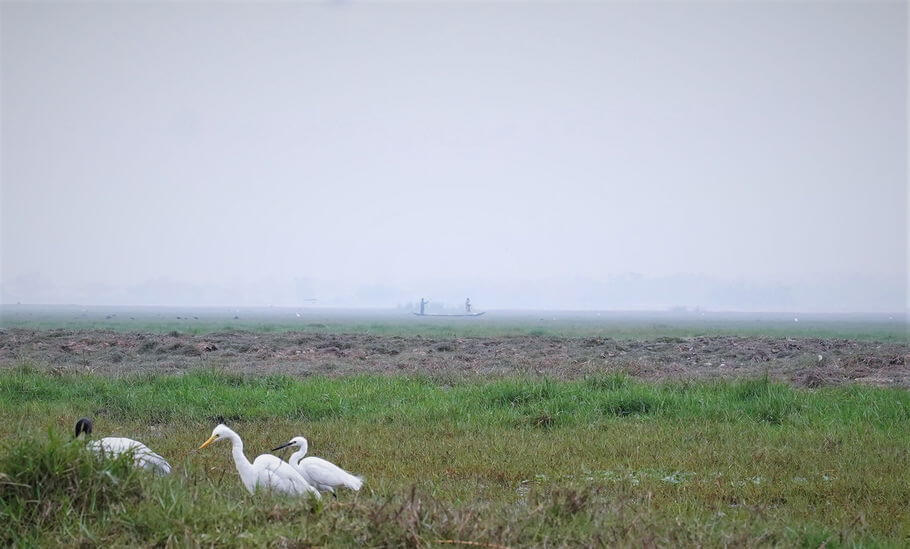
The narrow dusty road cut flanked by the wetlands on both sides takes you to the jetty point for boat or canoe ride for bird watching. The swamps are overlooked by faint lining of faraway hills. The water channels are interrupted by silent murmurs of the wooden boats and canoe. Flock of birds take off every now and then. The purple moorhen pecks through the reed along the edges of the swamp. As our canoe glided past the estuaries and into the open water, pushing past the reeds, we saw hundreds of migratory birds. Every minute, our guide would point towards a bird, its name and other information with sheer excitement. During the two hour canoe glide, we saw many birds includes Asian Openbill storks, Black-tailed godwits, Brahminy Shelduck, Norther Pintail, Purple Herons, Whiskered Terns, Egrets and so many.
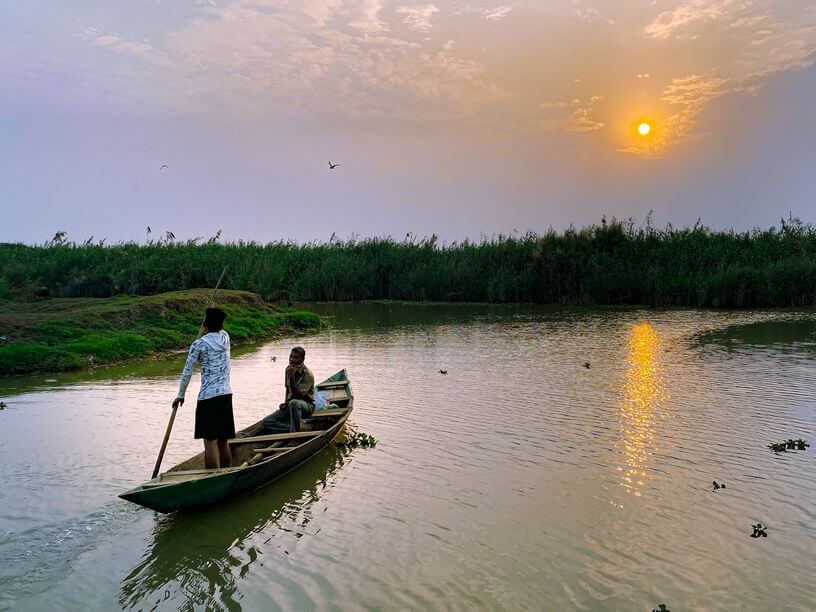
Wild Orissa – Beginning of a Revolutionary Conservation in Mangalajodi
The bird colonies were endangered by excessive human poaching of birds for meat. Plagued by poverty, lack of livelihood means, and taken up hunting or poaching as second nature, the villagers continued to assault the eco-system of Mangalajodi. The excessive poaching threatened the birds and significantly reduced it population in 90’s. The uncontrolled poaching of birds earned the village shameful reputation of “thieves”.
As the night cast a blanket of darkness, the villagers silently glided their canoe or boats along the shallow marshland to lace the lily pods with Furadan poison. At the crack of dawn, the boats would be back with dead birds poisoned from consuming lily pods. The carcass of the birds hung on racks of local market and sold as meat delicacies. The dead birds fetched and filled the bellies of the hungry poachers and their family but dwindled the feathery population with the lurking threat. The estuaries and lagoons of the wetlands were hotbed for mass avian murder.
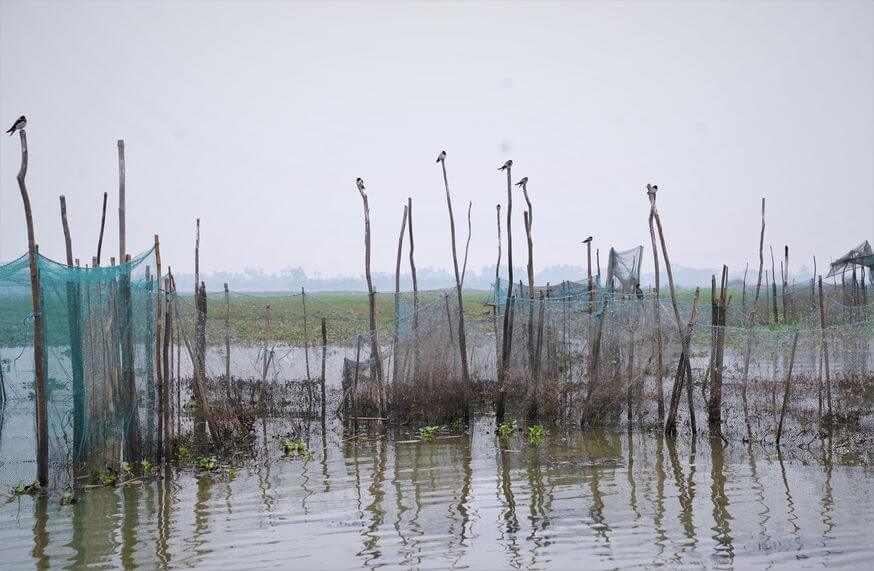
Haunted by regrets and guilt of merciless poaching of birds, Nanda Kishore Bhujabal spearheaded the conservation movement and took the first step. However, the severe decline of the avian population and the empty reeds lead him to initiate a conservation movement.
This led to the formation of NGO Wild Orissa in 1997 for initiating community conservation. With the initiatives by Wild Orissa, it assisted the poachers into setting up Sri Mahavir Pakshi Surakshya Samiti on 10th December 2000 in Mangalajodi – a stepping stone towards renouncing poaching and contributing to the protection of the eco-system. It was an uphill battle to transform a village dependent on poaching for livelihood. A massive campaign was launched to nab poacher, destroy the poaching nets and rescuing the trapped birds.
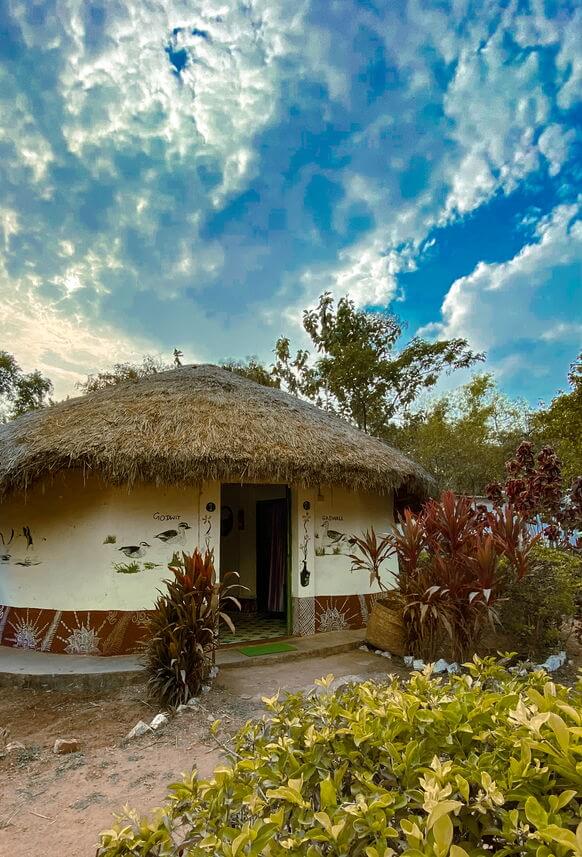

Mangalajodi Ecotourism – A Thriving Way of Community Livelihood
With community conservation initiatives, Mangalajodi again sprawled as winter sojourn for the migratory birds. The once dwindling avian population made a comeback on the marshlands of Mangalajodi, the reeds and water again was alive with the cooing of the birds. This paved the way towards introduction of eco-tourism to generate a livelihood for the village community.
Eco-tourism in Mangalajodi was facilitated by Indian Grameen Services (for more details please visit www.igsindia.org.in) – a NGO which helps in helping with sustainable livelihoods in rural places across India. The fragile eco-system of Mangalajodi is safeguarded by the eco-tourism initiatives by Indian Grameen Service with funding by organization like RBS Foundation India (presently NatWest India Foundation). The transformation of the poachers into conservationist needed a sustainable model for generating livelihoods for the rural community of the village. The poachers were trained to equip them with hospitality skills which was a major transformation that built a sustainable tourism model.
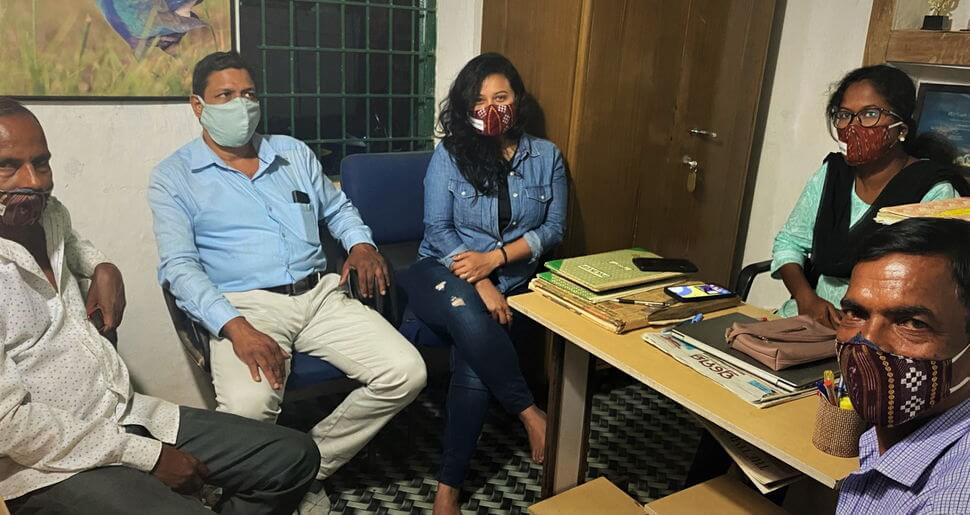
Mangalajodi Ecotourism was launched in 2010 for incentivizing economically the local community through tourism in sustainable way. The boost in tourism has helped the community to cope up and transition into conservationist post renouncing poaching under oath. Thousands of ornithologists, wildlife photographers, and nature tourist visit Mangalajodi every year building a chain revenue system. The villagers play an active role in growing and sustaining Mangalajodi Ecotourism. Currently, Mangalajodi Eco-tourism employ nearly 100 villagers in the eco-tourism sector as guides, birding experts, boat men, cook, hospitality and housekeeping.
Also Read my experience living as a local in Raghurajpur
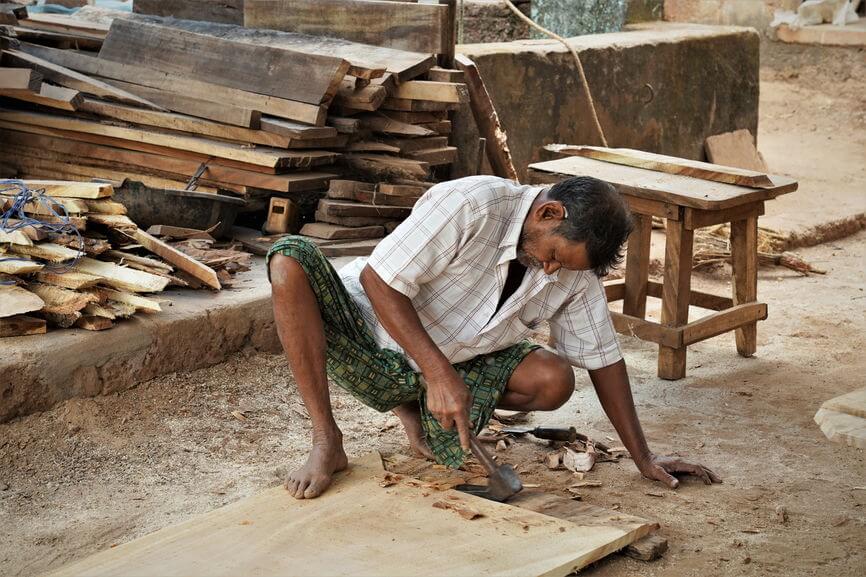
Country Boat Makers of Mangalajodi
Right next to the eco-campus and cottage of Mangalajodi ecotourism, I saw two men working dedicatedly crafting the wooden boats. The local boat makers has been in the business since generations and the skill has been passed on to the family lineage. As I walked into the premises of the boat makers home, Mr. Bana Maharana (owner of the boat making factory) was slicing and shaping a freshly cut piece of wood for making a boat. It takes nearly 10 to 15 days to make a 15 feet boat and charge starts from Rs 35,000. Most of the boats are sold to the local fishermen within or to people in the neighboring village.
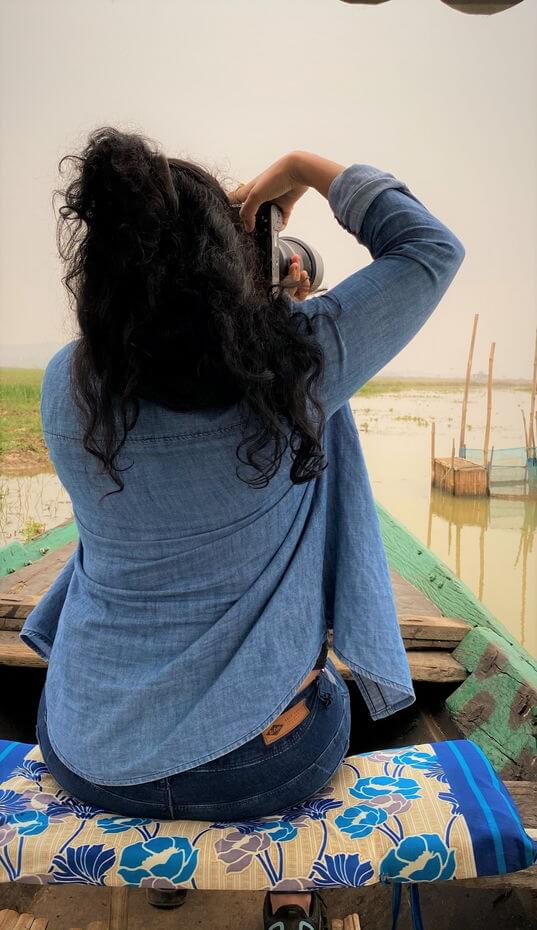
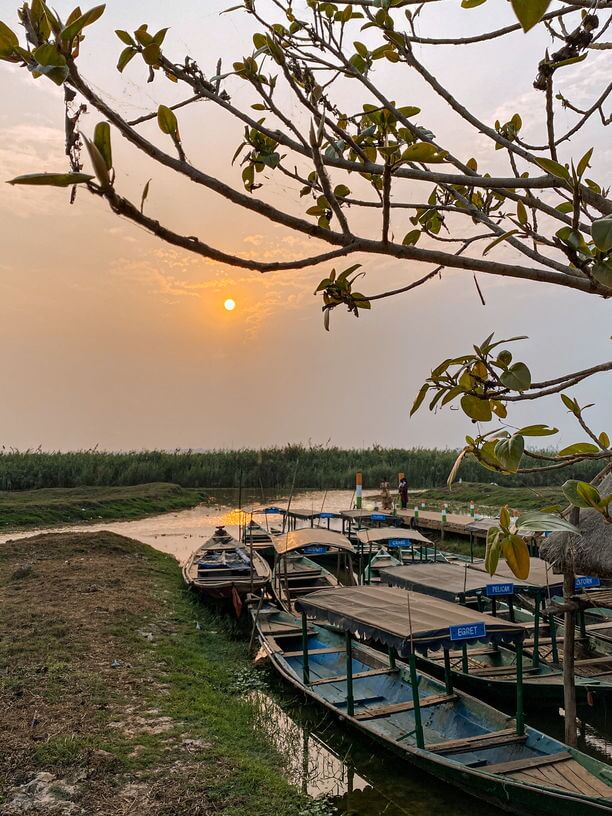
Boat Ride through the Mangalajodi Marshlands
The best way to witness the beauty is an early morning boat ride which last nearly for 2 hours. The scenic vegetation accompanied by the chirping of the migratory and local birds is a blissful experience. The boat ride is accompanied by a boatmen and birding guide who help in spotting and showing different birds. The cost of a boat ride for 2 hours is Rs 1200/-
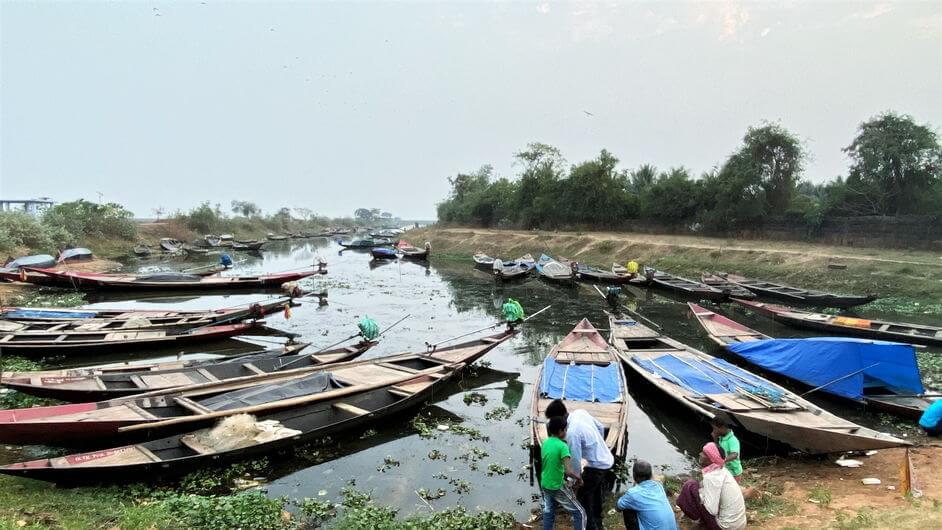
Concerns that Continue to Plague the Village and Future Roadmap
Although the village has seen a new horizon in terms ecological transformation with poachers turned into conservationist and earning a decent livelihood, recent of the village continue to ride the wave of poverty. Tourism in Mangalajodi was initially low-impact and community-managed. However, growing popularity of the destination as evident in the increasing number of tourists visiting Mangalajodi is becoming a cause for concern.
For example, Mangalajodi Ecotourism alone hosted 350 tourists during 2010, while the footfall increased to 2,545 during 2021. There are three community-based ecotourism enterprises and one government-run nature camp in the area, which are offering tourism services.
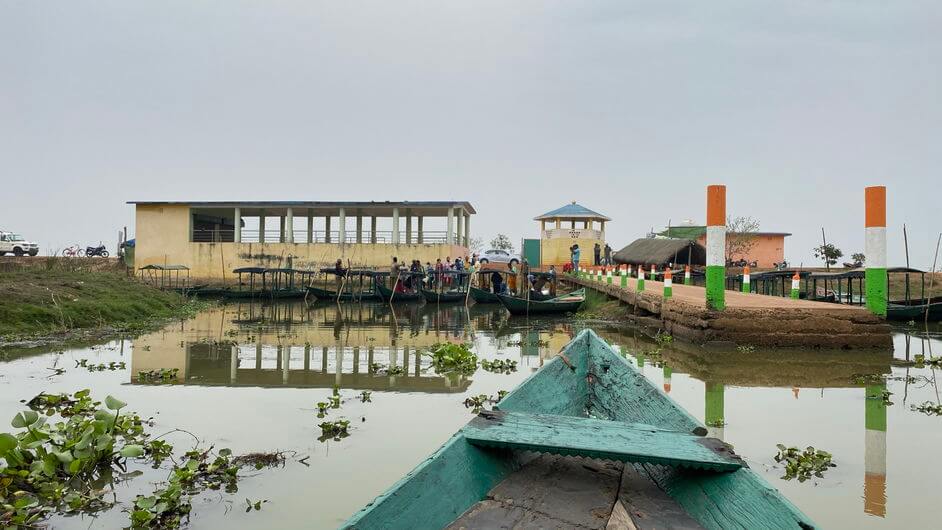
As I spoke to Sanjib Sarangi from Indian Grameen Services over the phone, he told me that –
“The prevailing practices and people of the emerging ecotourism industry in Mangalajodi are not geared up to meet the challenge of responsible tourism in the event of high tourist pressure.
A number of unsustainable practices like; making noise by few tourist groups during bird watching, overcrowding of tourists during weekends and public holidays, tourist vehicles running high speed on jetty road and creating vehicular congestion at jetty for parking, using high decibel horns, permanent constructions for public utility at destination, and oil and toxic components released by the motor boats creates an issue.
Overfishing in Chillika and the chemicals used by the farmers of the catchment area farms contaminates the water flowing through seasonal streams to the wetland. The extensive soil erosion increases the sedimentation of the wetland, which are an antithesis of the established sustainability principles. The lack of standard practices is on rise with growing footfall and revenue inflow to the village and excessive anthropogenic pressure due to increasing number of boat safari in the wetland for bird watching especially in peak tourism season during December-January months, posing threats to this natural habitat in future, if not regulated”.
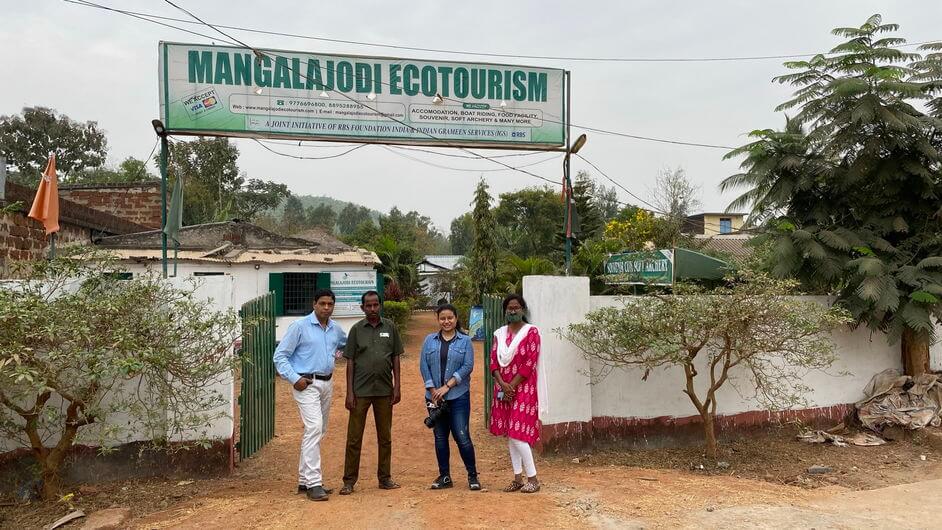
Considering the future risk of over-tourism at Mangalajodi, the subsequent challenges of the wetland ecosystem, a Carrying Capacity (CC) assessment was undertaken at Mangalajodi during 2019-2020 and the report with key findings and recommendations are ready to disseminate across stakeholders through series of consultations to co-create acceptable norms and guidelines to administer at the destination. The team envisions that there is scope for the demonstration of Carrying Capacity based tourism management at Mangalajodi and the adoption of responsible tourism practices to preserve the pristine wetland its floral and faunal diversity, especially birds in the long run – said Sanjib Sarangi.
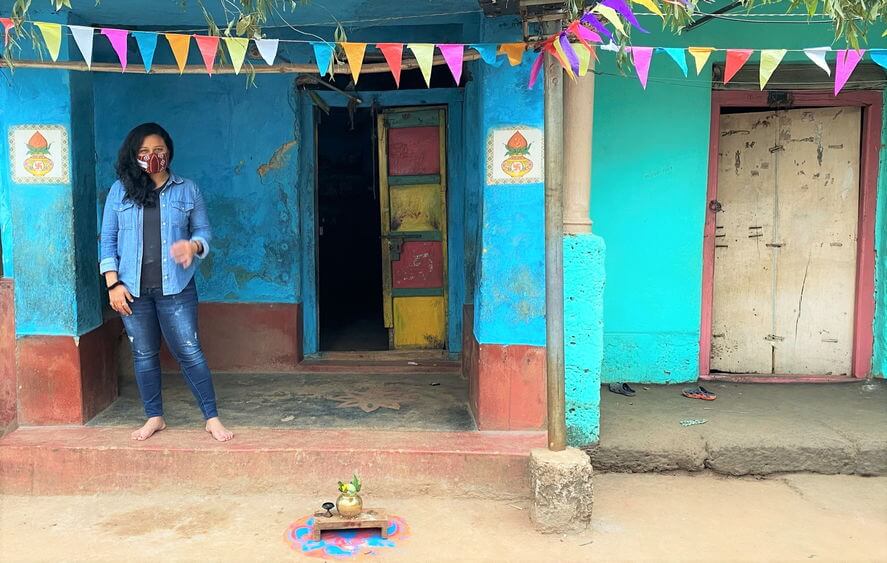
Travel Information
Where to Stay – I stayed at the rustic and eco-friendly mud cottages of Mangalajodi ecotourism for details visit https://mangalajodiecotourism.com). With such eco-tourism initiatives, it helps in providing a livelihood for the local community. The money from the eco-tourism goes into development and growth of the community. The mud houses are beautifully painted, designed with eco-friendly material, and perfect for a serene, relaxing night stay.
How to Reach Mangalajodi – The public transport to the place is quite limited, although there are some local transport from Puri. However, the best way to reach Mangalajodi is by hiring a private taxi or through self-driven options. However, the nearest rail head is Balugaon which is 35km, nearest airport is Bhubaneswar which is 75km away and nearest bus stop is Tangi which is 8km from Mangalajodi.
Best Time to Visit – Winters are the perfect time to visit the marshland. The migratory bird season is from October to February and also the best time in terms of weather conditions.
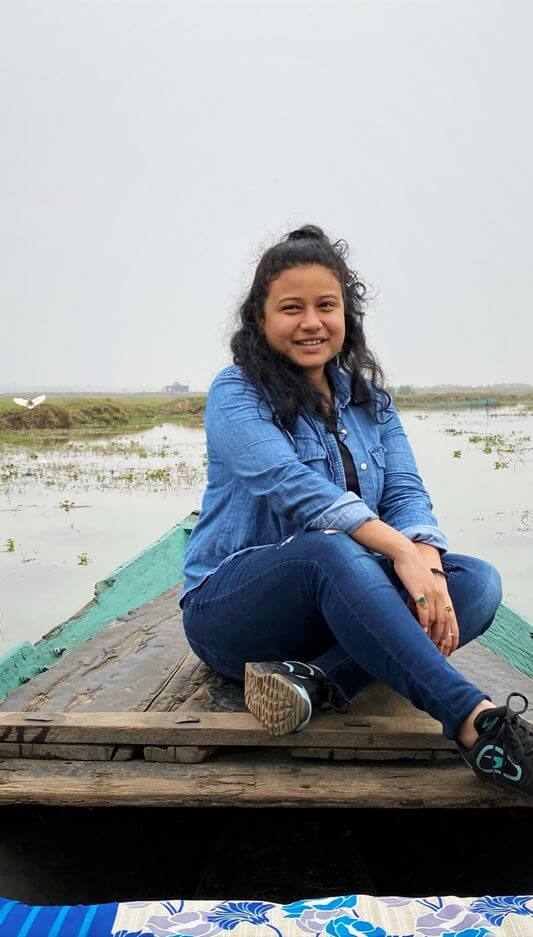
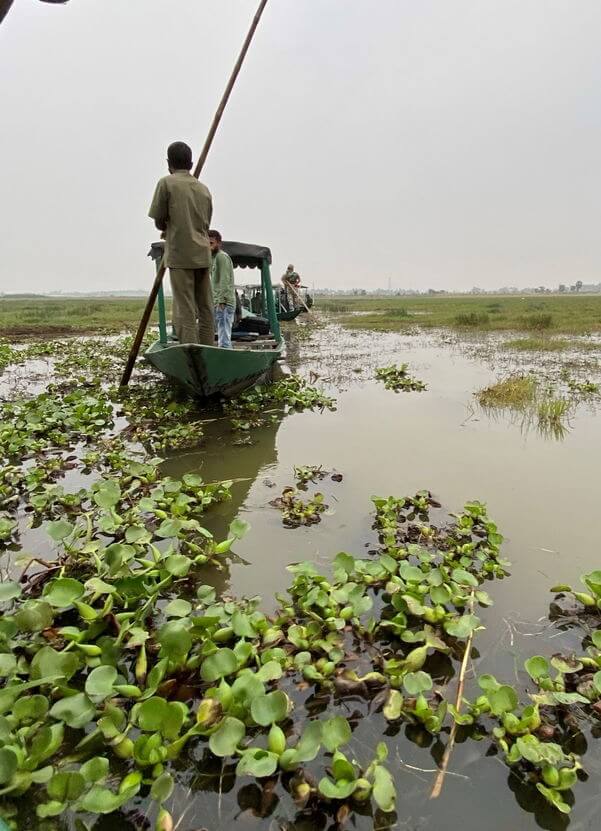
PIN THE POST TO PLAN A TRIP TO MANGALAJODI
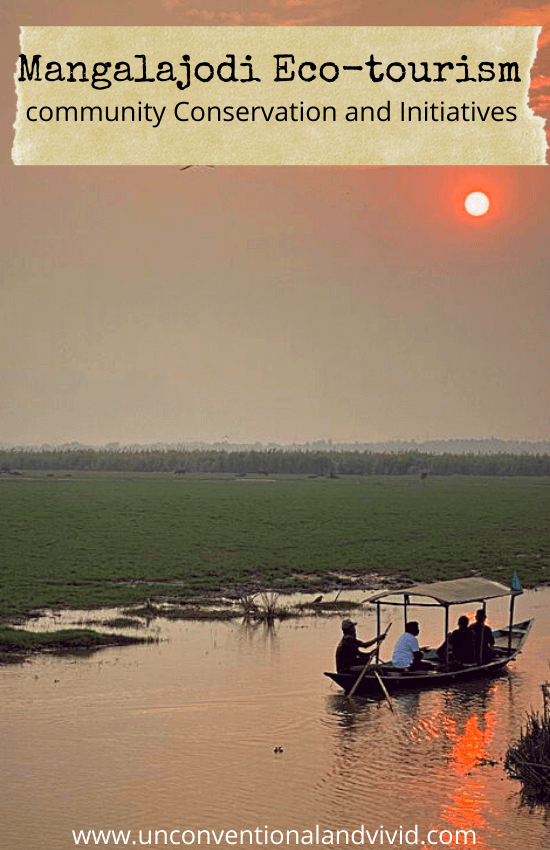
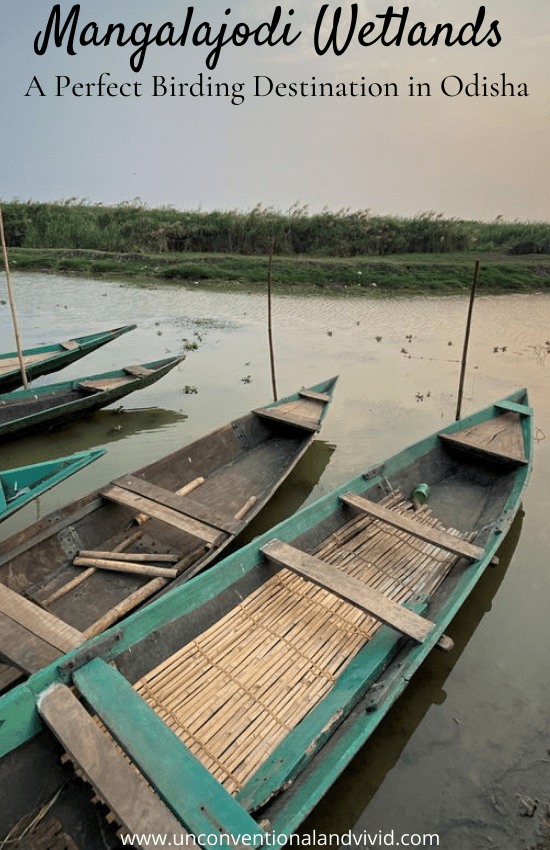
Disclaimer -I was hosted by Mangalajodi Ecotourism but all the views are mine. I would like to thank Mr. Sanjib Sarangi – Associate Vice President, Indian Grameen Services for helping me plan my trip and experience Mangalajodi from grassroot level. A special mention to Ms. Archana Das who helped me execute the trip and showed me around.

